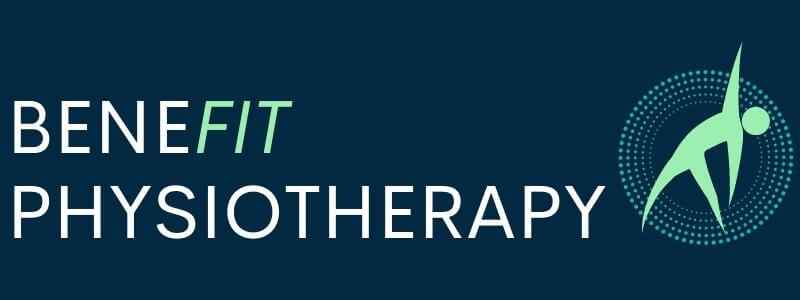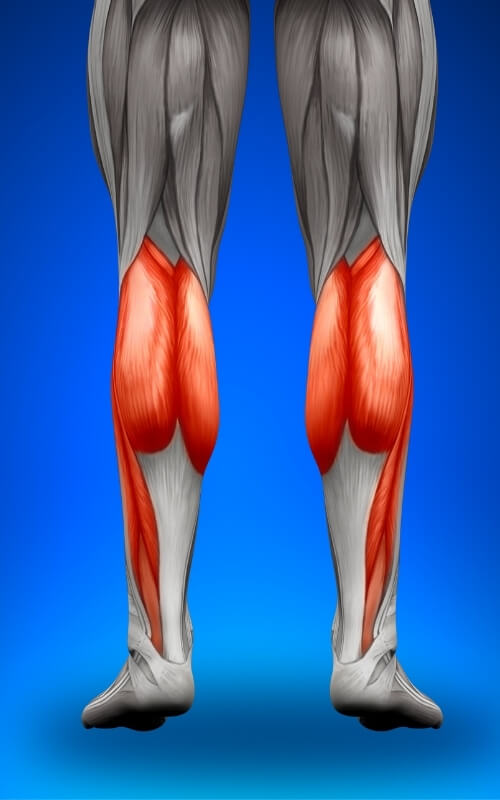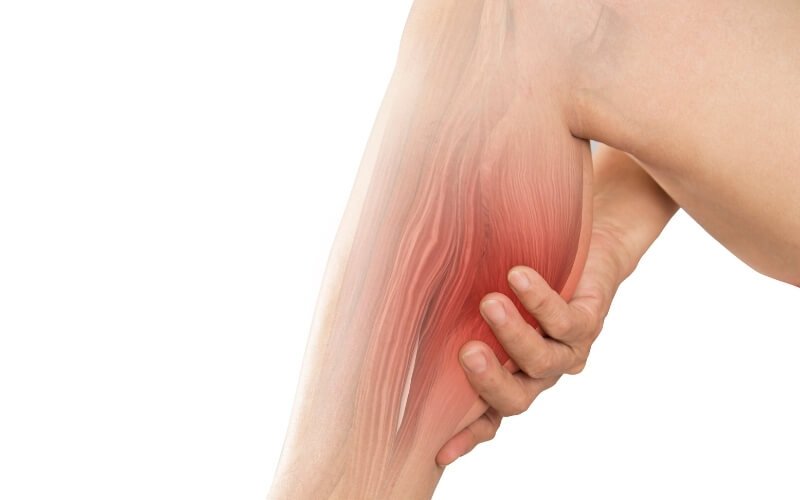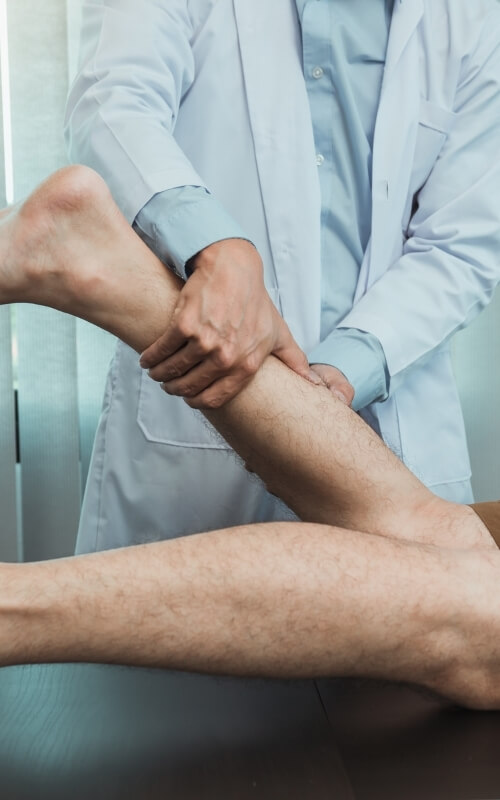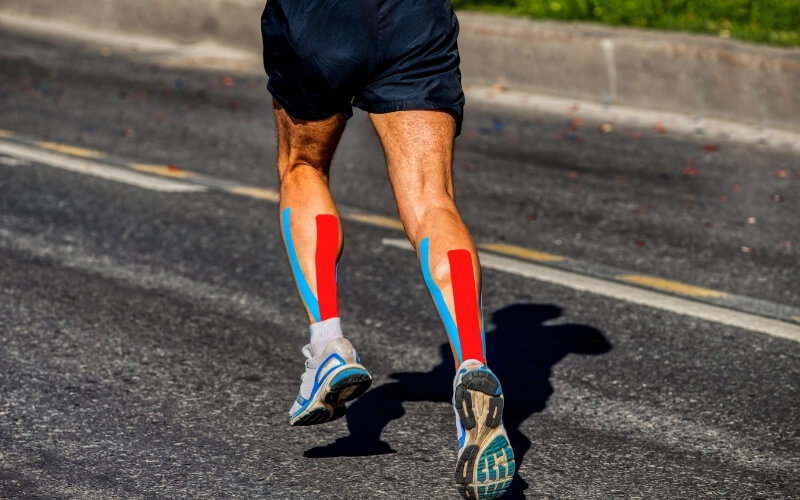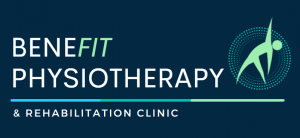Calf strains are a common injury in running and jumping sports. They come in all different shapes and sizes.
A minor calf strain may feel like a slight bruise when you are walking, a really bad calf strain will have you limping around on crutches for several weeks.
The most frustrating part about calf strains is that they frequently reoccur. This is mostly due to poor compliance with rehabilitation exercises.
The Calf Muscles
The calf muscle is actually a combination of two muscles; the soleus and gastrocnemius.
These muscles both connect to the heel bone via the Achilles tendon. Together they work to plantarflex the ankle (i.e. pointing the toes down). In both running and walking, this action is used to propel the body forwards.
The calf muscle is also vital in generating power when jumping.
Because of its role in running and jumping, the calf muscle is essential in most sports and our everyday movements.
What Is A Calf Strain?
The term ‘calf strain’ is the common way of describing a torn calf muscle.
Technically speaking, there is no difference between a torn calf muscle, a pulled calf muscle and a calf strain. However, it does exclude injury to the calf connection points at the knee and Achilles tendon.
In essence, a calf strain involves tearing of the muscle fibers in the calf muscle. The severity of injury in a calf strain is determined by the size of the tear in the calf muscle.
A calf strain will feel like a small pop or pull in the calf region. That pop/pull sensation is the calf muscle tearing. The tear will generally occur because there is pressure being placed on the calf that it is unable to withstand. The most common occurrence of this is while you are sprinting, since running places huge demands on the calf muscle.
Another component which will lead to that dreaded calf strain is fatigue. This is seen more in long distance runners, but is also common in amateur athletes playing 90 minutes of football. When the body is not conditioned to long periods of running, the calf becomes very fragile and is more prone to tearing.
Signs Of A Calf Strain
Calf strains are often simple to self-diagnose. You will feel a sudden pain in the back of the leg and possibly feel a pop/pull sensation at the time. There will be immediate pain in the calf which gets worse with activities such as running and jumping.
In more severe tears it’s likely that you will be unable to run or jump at all. While the muscle is still warm these symptoms may not be as obvious, but after cooling down they will become more apparent.
Expect that the calf strain will get worse over the next 48-72 hours. This is because the rest of the muscle will cool down causing spasm and the inflammatory process will have taken effect. You may notice some swelling or bruising in the calf after 2 days.
Within this period you should avoid all calf stretches! Stretching out a tear will cause further distension of the muscle fibers and can lead to worsening of the original strain.
How Long Will A Calf Strain Take To Heal?
It’s difficult to be specific when answering this question without a physical assessment from your physiotherapist.
They will be able to diagnose your injury and it’s severity to determine your recovery time.
In the absence of this assessment, minor calf tears (generally you’ll be able to walk comfortably) will heal within a 4-week period.
More significant tears will heal within 8 weeks and will often require significant rehabilitation.
How to Treat A Pulled Calf Muscle
Once you have recognized that you’ve sustained a calf muscle strain, follow these steps for optimum recovery.
- The first thing you should do is avoid aggravating it further. Generally, this will mean stopping the sport that you’re playing and getting off your feet. This should be applied to even the most minor of calf strains to prevent them from getting worse and turning into larger tears.
- Once you’re off your feet, the next step is to apply an ice pack to the injured area. Applying ice packs for 10 minutes every hour will help limit the inflammation and reduce pain in the calf. Do not use anti-inflammatory medication or ointments on your calf muscle strain! Inflammation is an essential component of the healing process and will be required for the calf muscle to mend. Though we want to limit the inflammation with use of ice packs, completely removing the inflammation with medicated anti-inflammatories will cause poor long-term outcomes for the calf (even if it feels good in the short-term).
- At this point you’ve rested the calf and applied the ice packs hourly, it’s time to make an appointment with your physiotherapist. Your physio will guide you through a staged rehabilitation program for the calf muscle. The timing and application of this program will be crucial to achieving optimal recovery in the shortest possible time. Each calf will be different depending on the severity of the calf tear and the overall fitness of the individual. The ultimate goal of physiotherapy for calf strains is to allow the muscle to heal properly and regain the former strength of the calf to allow a smooth and unrestricted transition back to sports.
Do I Need A Scan To Diagnose My Calf Muscle Tear?
No, unless told otherwise.
Many patients and health professionals prefer to have their injury diagnosed by an ultrasound or MRI. The truth is that these are expensive tools that don’t provide much value when dealing with calf injuries.
The scan will help measure the size of the muscle tear at a single point in time. It won’t help determine whether the calf tear is healing or when you’ll be able to go back to your sport.
Calf strains are often a recurring injury which will prevent athletes from participating in sport. It’s important to recognise the signs of a calf strain and the immediate treatments you should apply to get the best outcomes.
A physiotherapist guided rehabilitation will improve your rehab outcomes and help prevent future injury of the calf.
Make an appointment with our physio for assistance with your calf strain.
One-on-One Physiotherapy Care - Complete Attention - You Deserve It !
Contact Us today to find out how we can help you.
